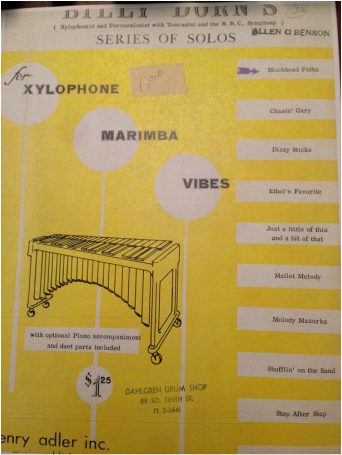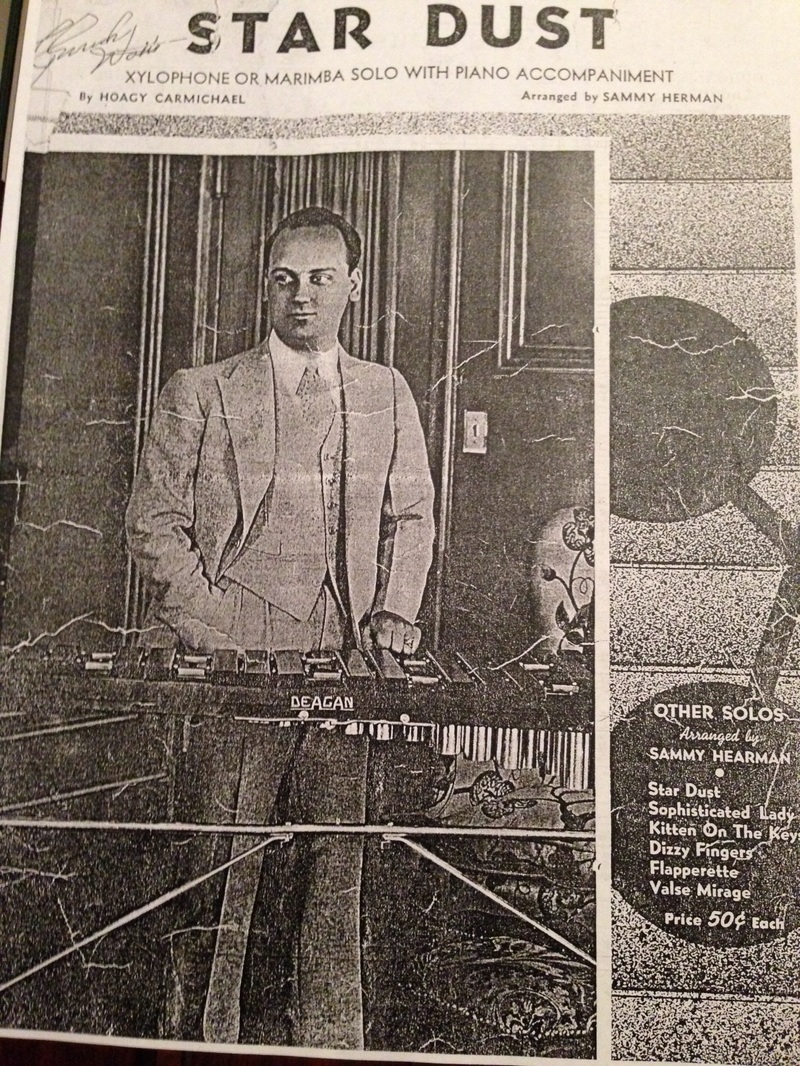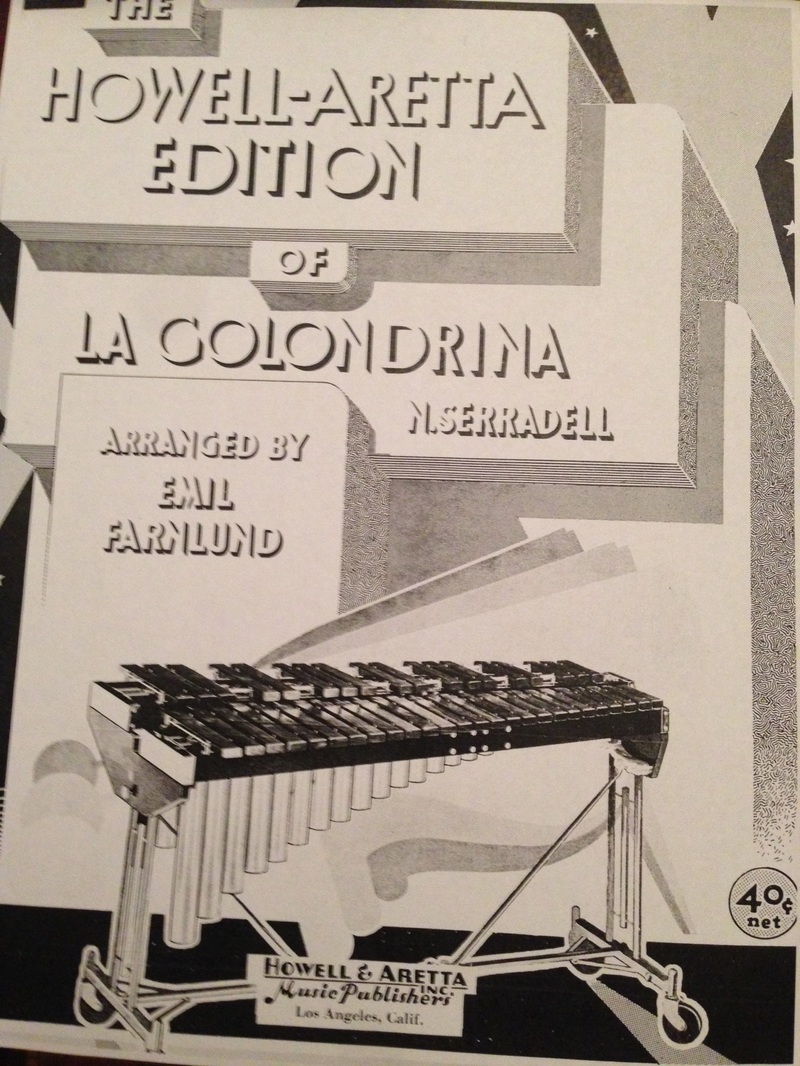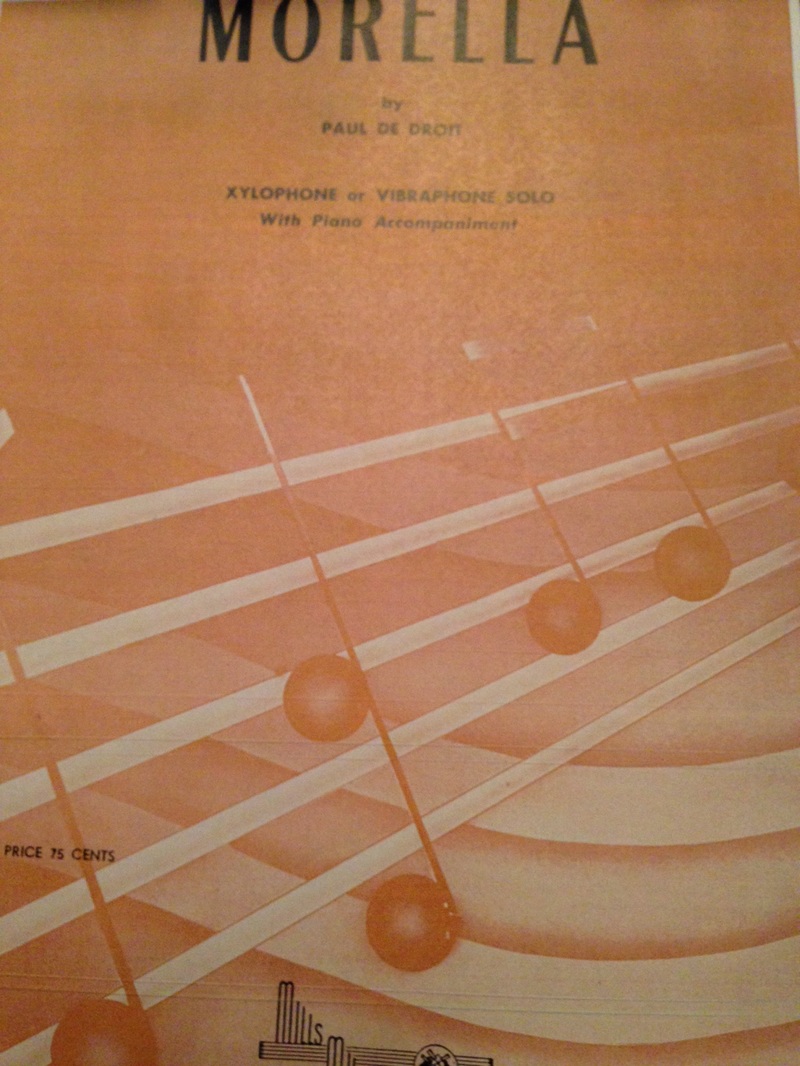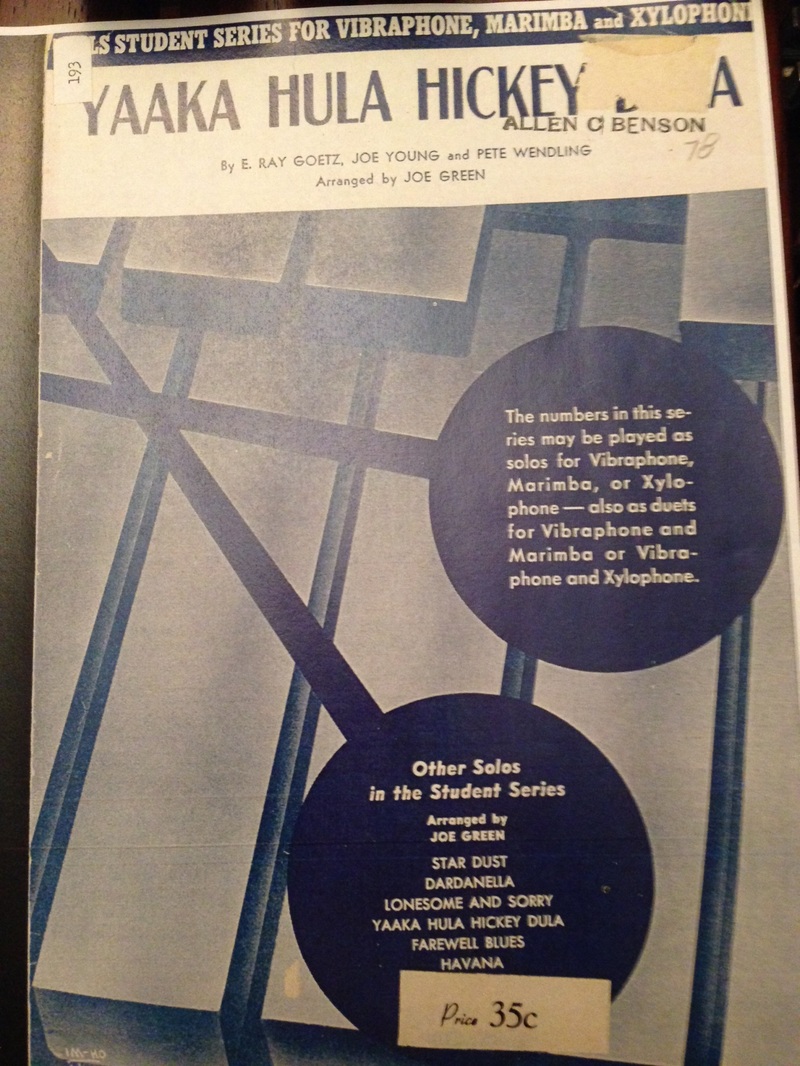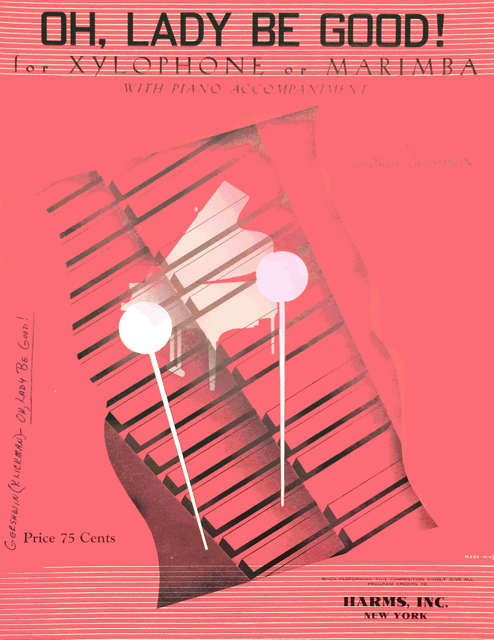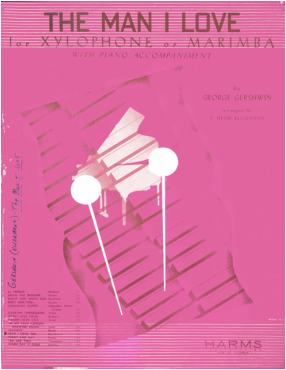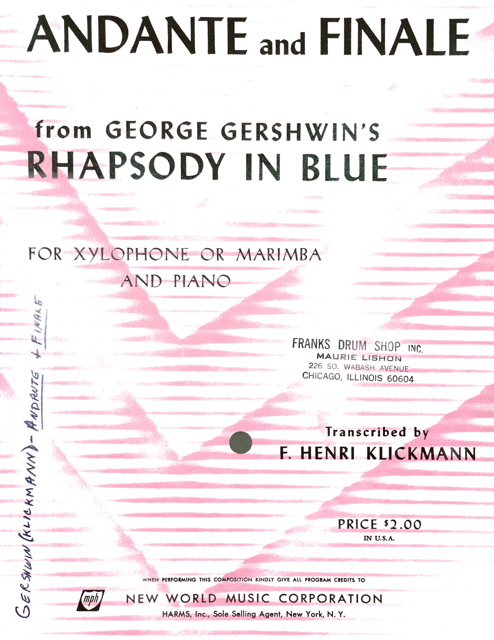|
Blockhead Polka -William Dorn and Edwin Bave
This composition can be played as a duet, Part 1 and 2 with or without piano, or just Part 1 with piano. It's tuneful and fun, plus you get to say the word Blockhead during your performance. If you look closely at this cover you can see that there are 9 other titles in this series. These duos are a wonderful way to liven up any recital recital. William "Billy" Dorn was a legendary New York percussionist who was said to be able to "read and play anything." |
|
|
Star Dust - Hoagy Carmichael arr. Sammy Herman
Oscar Hammerstein, in his book Lyrics, stated Star Dust rambles and roams like a truant schoolboy in a meadow. Its structure is loose, its pattern complex. Yet it has attained the kind of long-lived popularity that few songs can claim. What has it got? I'm not certain. I know only that it is beautiful and I like to hear it. Star Dust is the most recorded pop tune of all time. Surprised? I sure was! Here is an excellent bio on the xylophonist Sammy Herman. |
|
|
La Golondrina -N. Serradell arr. Emil Farnlund
This melody was originally written in 1883. La Golondrina (The Sparrow) refers to a longing for Mexico. Many arrangements and performances have been done of this melody. Roy Orbison and Elvis both recorded a pop rendition of this melody by the title of She Wears My Ring . Johnny O'Keefe's recording of this song rose to #2 on the singles chart in 1964, just before the Beatles came to the US. |
|
|
Yaaka Hula Hickey Dula -Goetz, Young Wendling, arr. Joe Green
A popular song of the day in 1916. This was a Tin Pan Alley response to the success of Hawaiian performers appearing here in the United States. They were popular acts and Tin Pan Alley was not to be out done, so song writers started writing "pretend" Hawaiian songs to feed the craze that was sweeping the country. The title is nonsense and is meant to sound Hawaiian. Interestingly enough, the real Hawaiian bands and musicians incorporated these "pretend" songs into their acts, thereby creating a legitimacy of the music. |
|
Oh, Lady Be Good! -George Gershwin, arr. by F. Henri Klickmann
From the Broadway musical by the same name, this piece by George and Ira Gershwin premiered in 1924. This tune, along with The Man I Love, are jazz classics. They are etched into the musical fabric of our culture. This music has been recorded by many of the great instrumental and vocal artists, not to mention being seen in a number of films and ballet. A catchy tune, just listening to the wide variety of interpretations by any of the great artists is a lesson in itself. |
|
|
The Man I Love -George Gershwin, arr. by F. Henri Klickmann
Written in 1927 for the musical Strike up the Band, this is one of the great classic American songs. F. Henri Klickman, who did the arrangements for all 3 Gershwin tunes on this page was a gifted musician. In addition to arranging many songs for instrumental solos and piano, he was a songwriter and composer of rags and concertos. It was stated "He had a talent for making a piece sound rich and complex while keeping it playable for the average consumer -Bill Edwards." |
|
|
Andante and Finale from Rhapsody in Blue -George Gershwin, arr. F. Henri Klickmann
I enjoyed playing this arrangement quite a bit and hope to find more opportunities to do so. As with some of the other selections, many great artists have interpreted these phrases and it is so much fun to hear what they do. Their ideas can inspire your ideas! |
|
